Self-Portrait in a Convex Smartphone
An artist observes her own process of making art, from daily encounters with her computer to personal reflections on how life itself unfolds.

Interview by Rosecrans Baldwin
The Morning News: The new show plays with your own artistic methods. Is art a process of accumulation?
Mia Rosenthal: In my case yes, it is all additive. There is no erasing or obliterating. Of course many painters approach their work with more of a push and pull, an adding and then a taking away. And when I think of a craft like stone carving, that is a completely subtractive process. So by no means do I think an additive process is the only way to approach an artwork. Continue reading ↓
Mia Rosenthal’s latest solo exhibition, a little bit everyday, is on view this month at Gallery Joe in Philadelphia, through March 22, 2014. All images used with permission, copyright © the artist, all rights reserved.
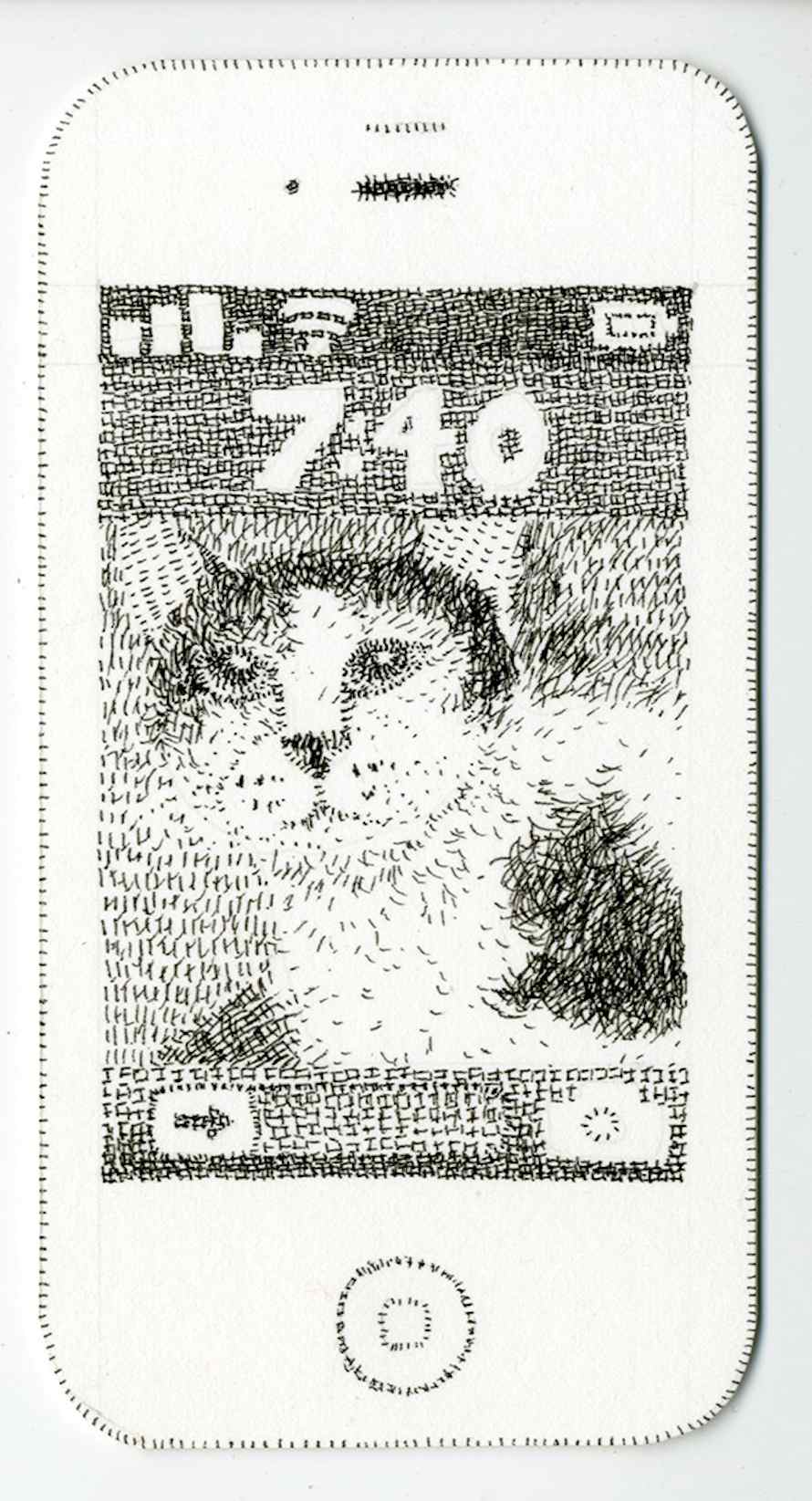
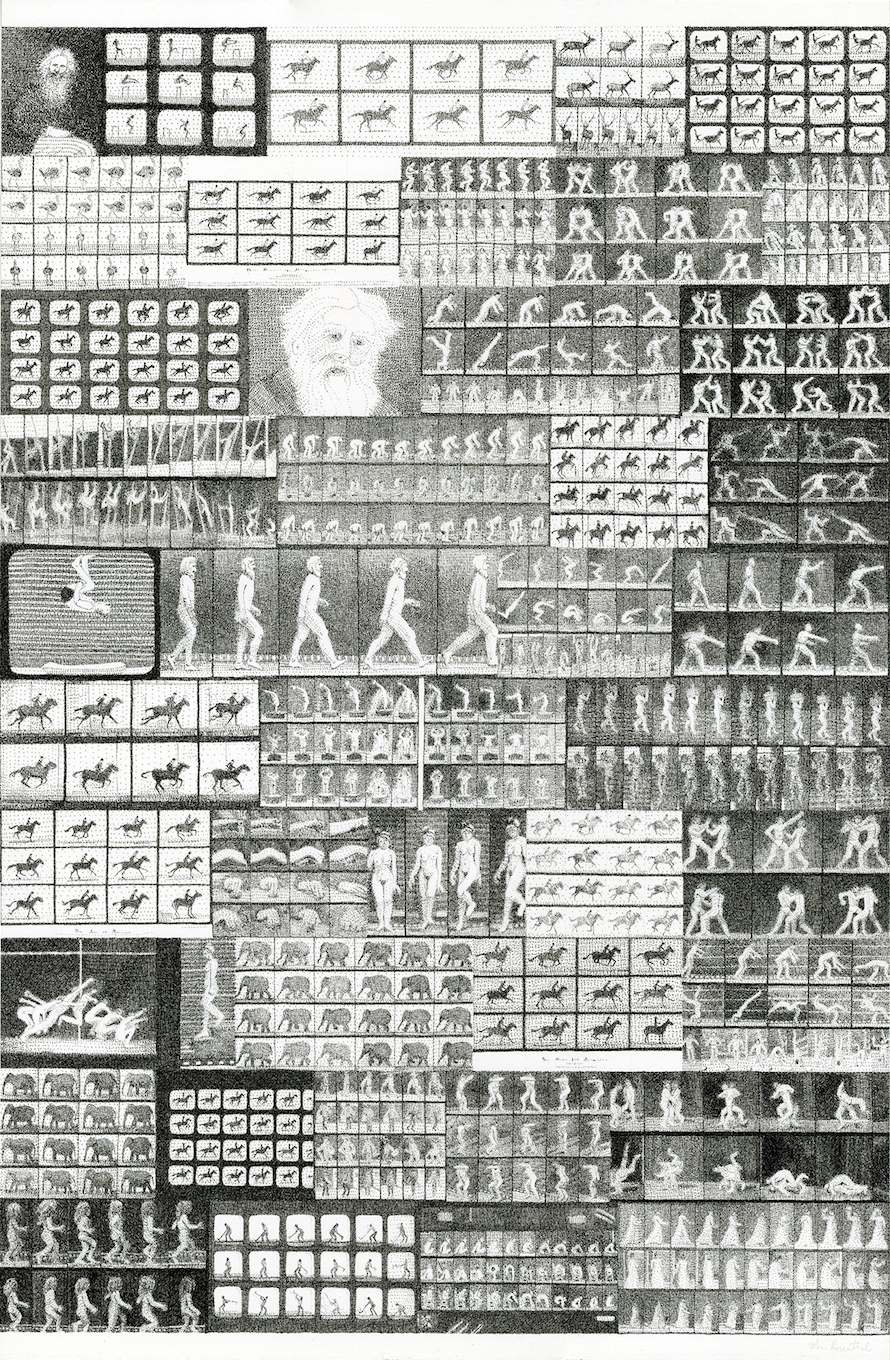
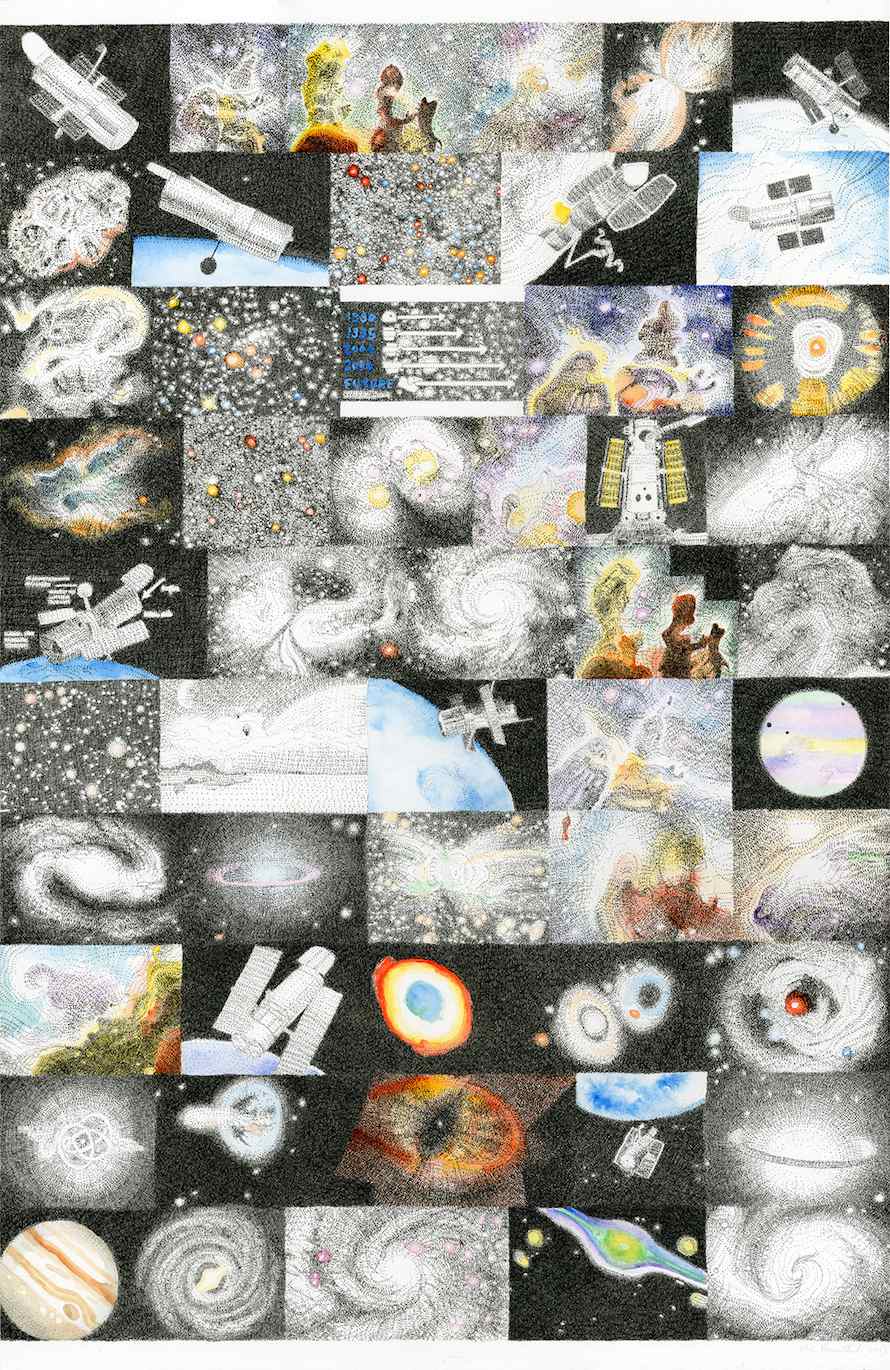
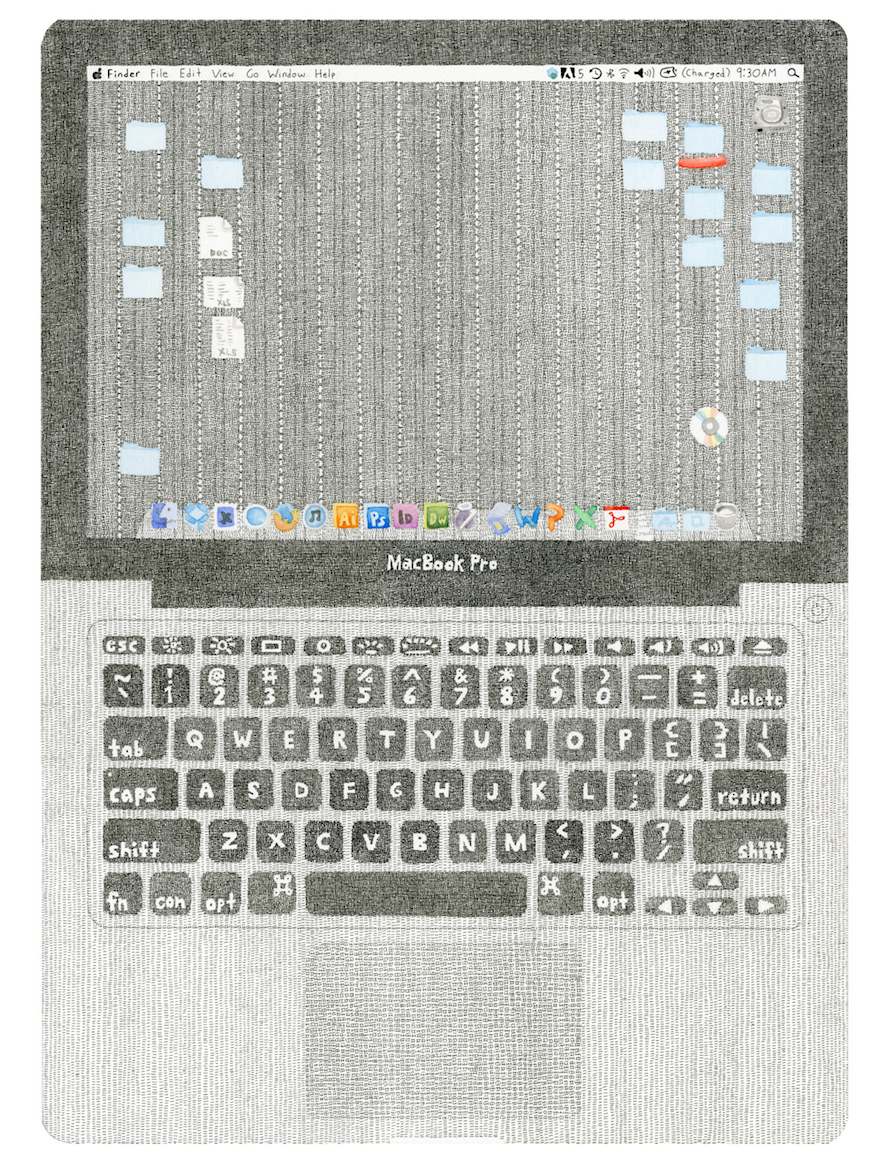
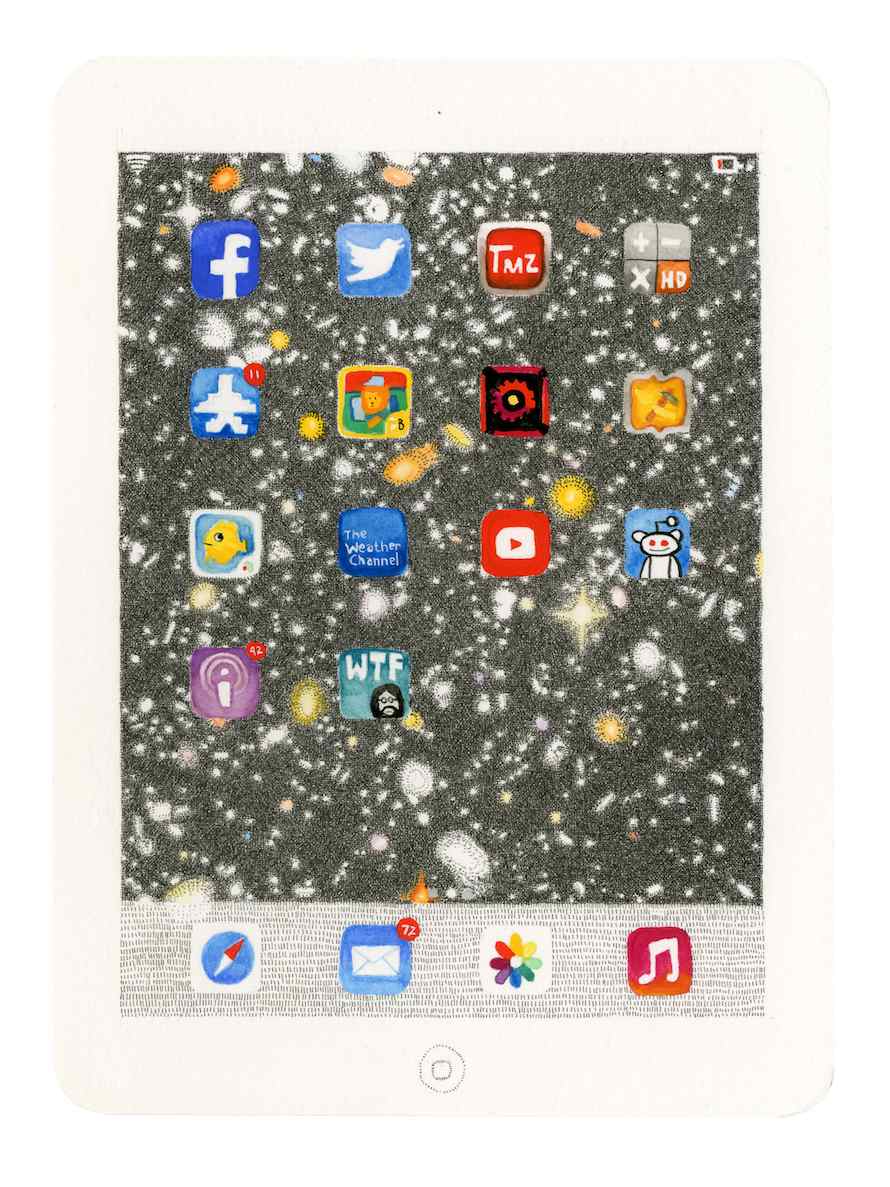
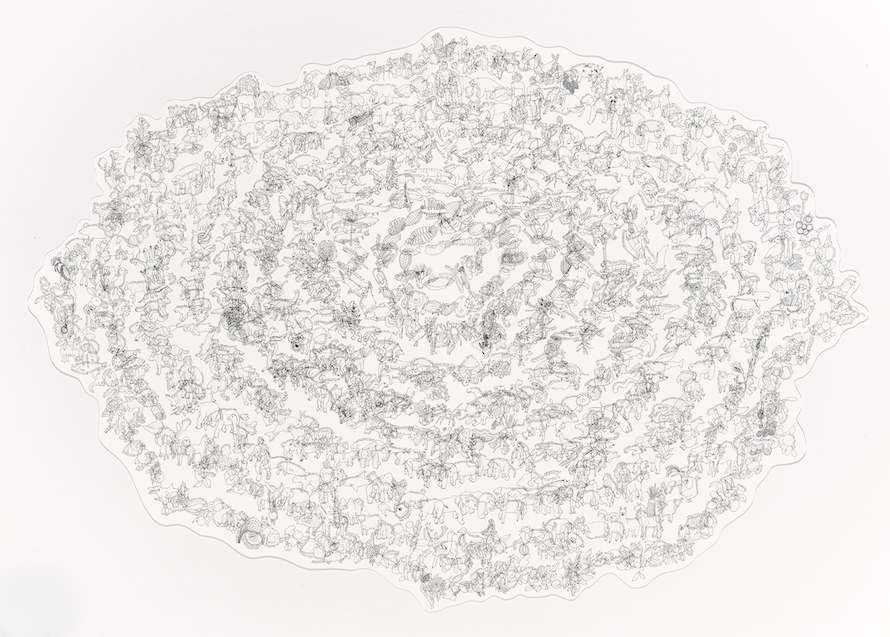
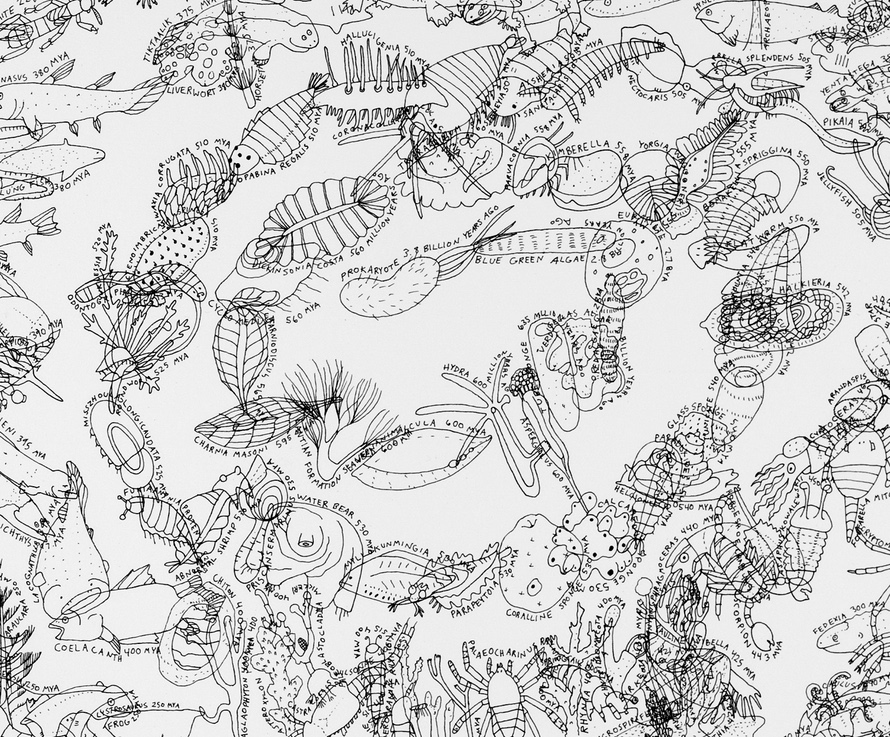
Interview continued
TMN: How did “Life on Earth” begin?
MR: In the actual making of “Life on Earth” I started with ‘prokaryote,’ which is a single cell organism, and then drew my way through 3.8 billion years to the present. However there was a good deal of preparation before starting the pieces. I did online research, mostly on Wikipedia, About.com and ScienceDaily, and put together an Excel document. From there I used Google Images to find reference material to sketch from, and I drew everything into my sketchbook. From there I created the final pieces.
TMN: What’s a typical work day?
MR: I have a three-year-old son who goes to morning preschool, so I get most of my drawing done while he’s in school, although I will also work in the evenings a bit. I have a small home studio, but I’m in the process of looking for something outside my house where I would have more space. If I’m setting up a drawing or working on a difficult area I’m intensely focused, otherwise I might be sort of zoning out or listening to podcasts while I’m working. I also run a small graphic design business from home so other days I might be busy with that.
TMN: Do you ever completely unplug?
MR: Yes, I think so. I have a very crappy phone that’s good for calls and texting and that’s about it, so when I’m out with my son I’m focused on what we’re doing and not playing Bejeweled or whatever. I feel like I would get way too addicted to an iPhone and be the mom at the playground so busy checking emails she doesn’t notice her kid is falling off the slide. Of course, that still means I’m still walking around with a phone so I guess that doesn’t qualify as being completely unplugged.
TMN: What was the first piece of art you ever sold?
MR: I sold my first piece to the Pennsylvania Academy of the Fine Arts. They bought a drawing from my MFA thesis show. I thought, Oh, I guess I’m a real artist now. My undergraduate degree is in illustration, so it really wasn’t until graduate school that I got serious about developing my work and found my voice as an artist.
TMN: What artist are you still waiting to “get?”
MR: Willem de Kooning. There, I said it. Please don’t throw rocks at me.
TMN: What do you admire most about scientists?
MR: Superior intelligence, willingness to experiment and fail, ability to do real good in the world, and the capacity to stay focused on one idea for decades.
